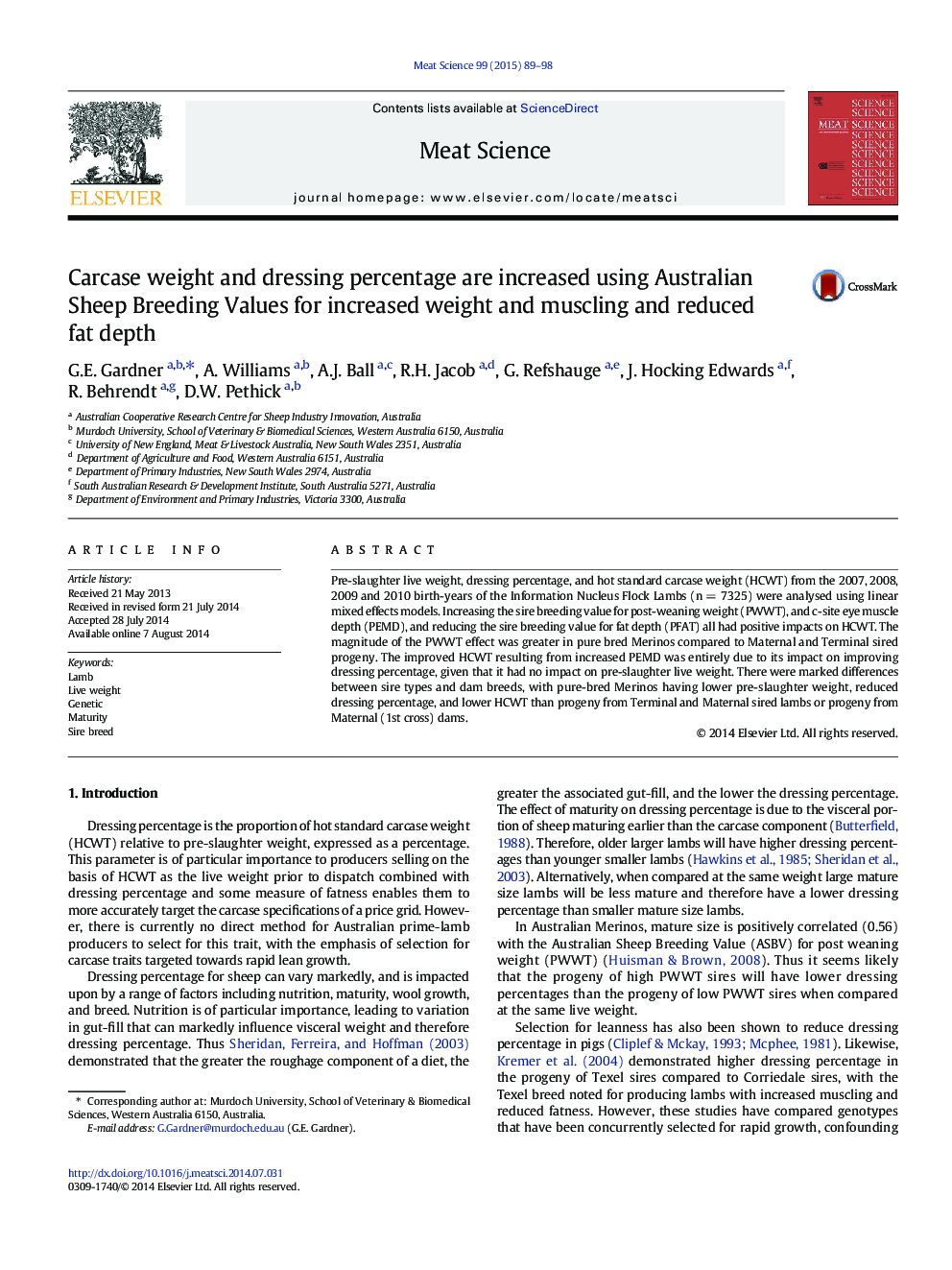| کد مقاله | کد نشریه | سال انتشار | مقاله انگلیسی | نسخه تمام متن |
|---|---|---|---|---|
| 2449865 | 1554095 | 2015 | 10 صفحه PDF | دانلود رایگان |
• In Merinos, increasing post-weaning weight breeding value increased dressing percentage.
• In Terminal lambs post-weaning weight breeding value had no effect on dressing percentage.
• Increasing post weaning eye muscle depth breeding value increased dressing percentage.
• Reducing post-weaning fat depth breeding value had no effect on dressing percentage.
• Post-weaning weight, eye muscle depth and fat depth breeding values all increased carcase weight.
Pre-slaughter live weight, dressing percentage, and hot standard carcase weight (HCWT) from the 2007, 2008, 2009 and 2010 birth-years of the Information Nucleus Flock Lambs (n = 7325) were analysed using linear mixed effects models. Increasing the sire breeding value for post-weaning weight (PWWT), and c-site eye muscle depth (PEMD), and reducing the sire breeding value for fat depth (PFAT) all had positive impacts on HCWT. The magnitude of the PWWT effect was greater in pure bred Merinos compared to Maternal and Terminal sired progeny. The improved HCWT resulting from increased PEMD was entirely due to its impact on improving dressing percentage, given that it had no impact on pre-slaughter live weight. There were marked differences between sire types and dam breeds, with pure-bred Merinos having lower pre-slaughter weight, reduced dressing percentage, and lower HCWT than progeny from Terminal and Maternal sired lambs or progeny from Maternal (1st cross) dams.
Journal: Meat Science - Volume 99, January 2015, Pages 89–98
